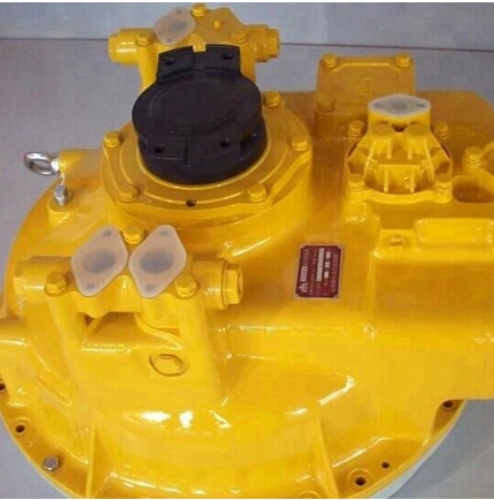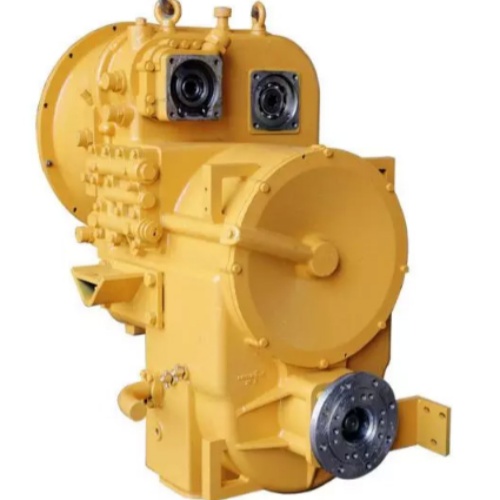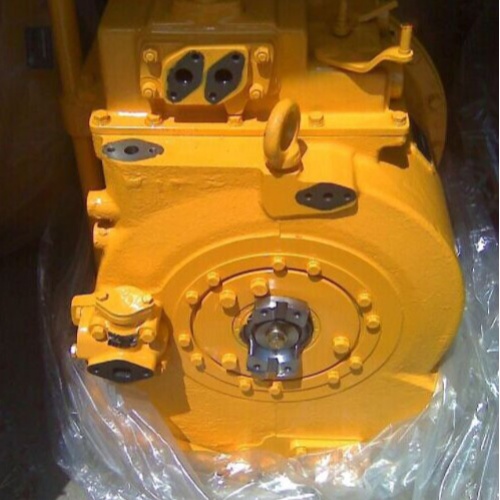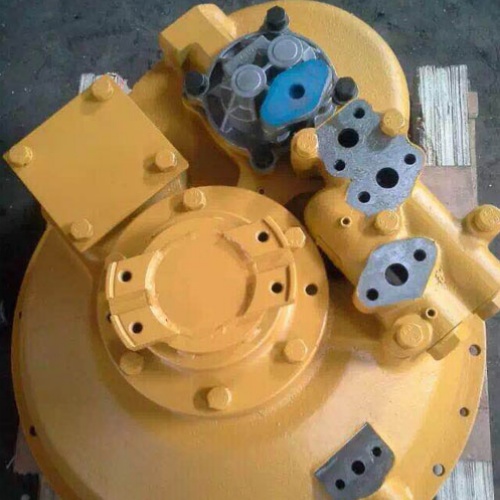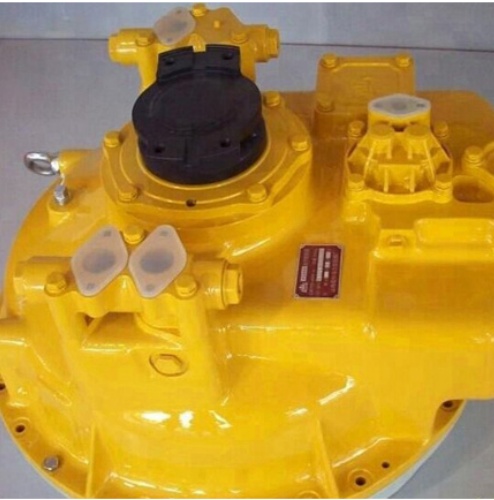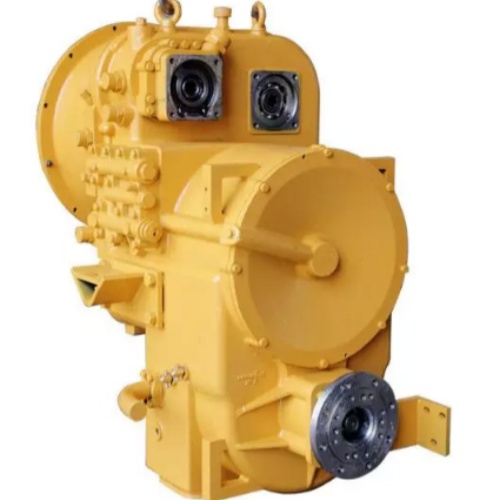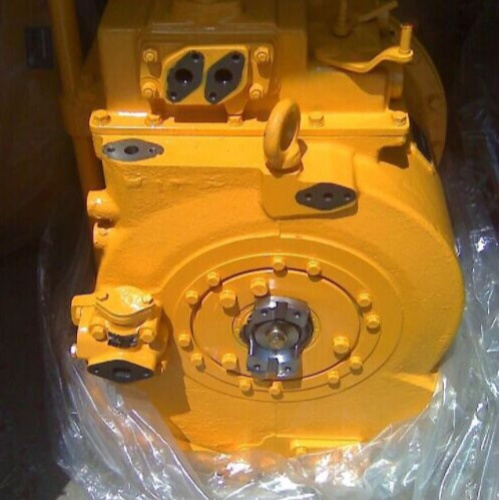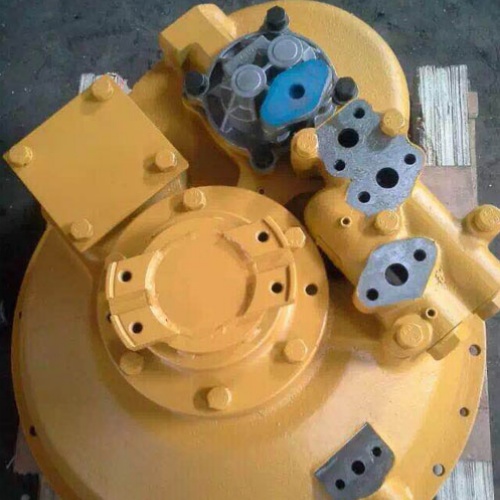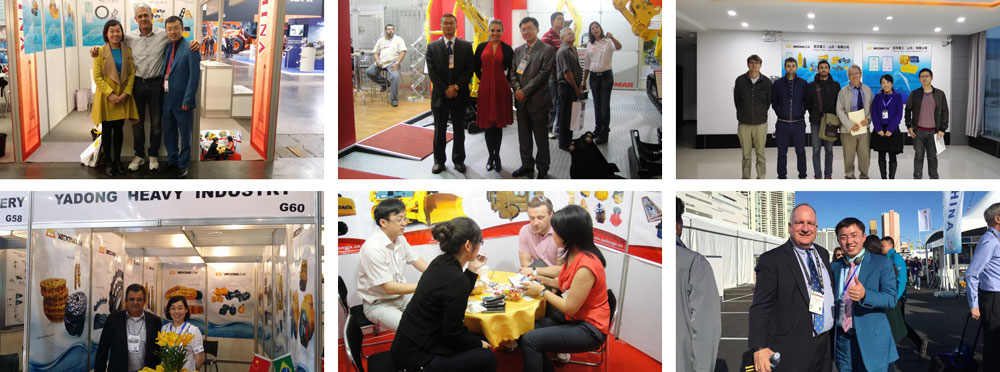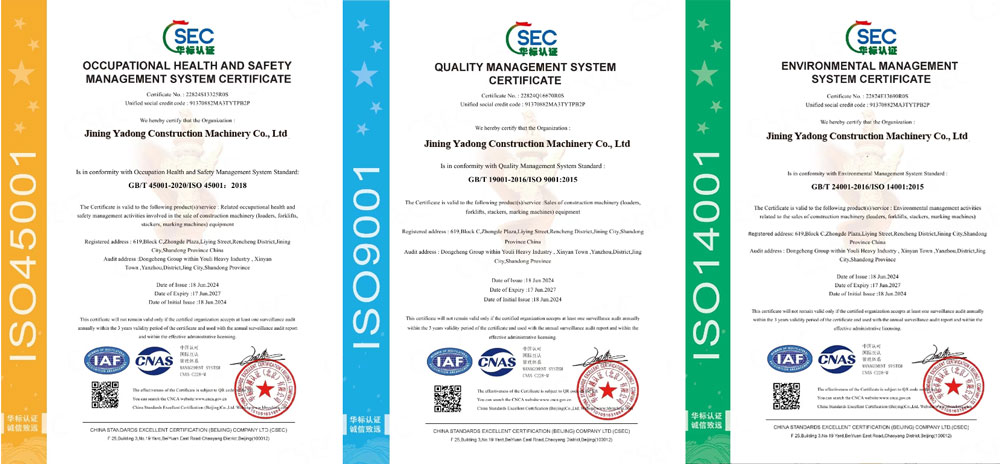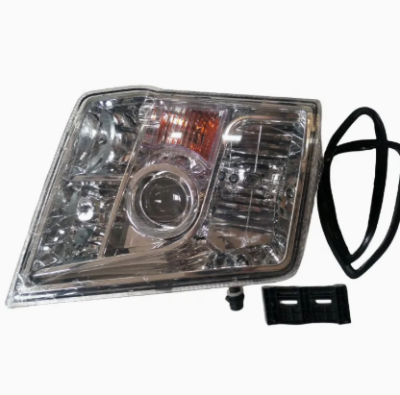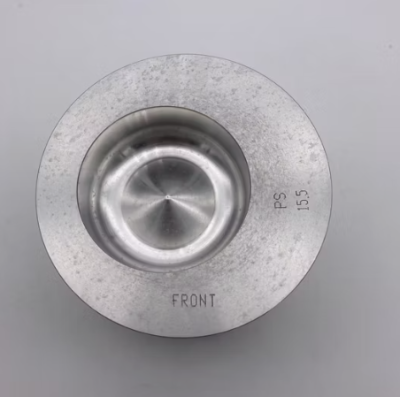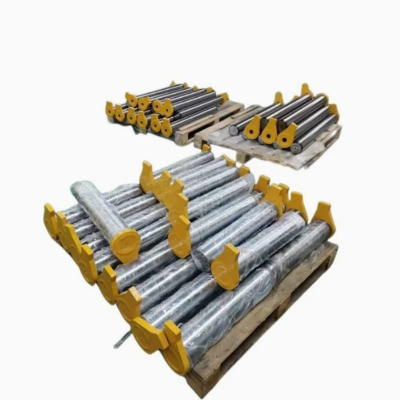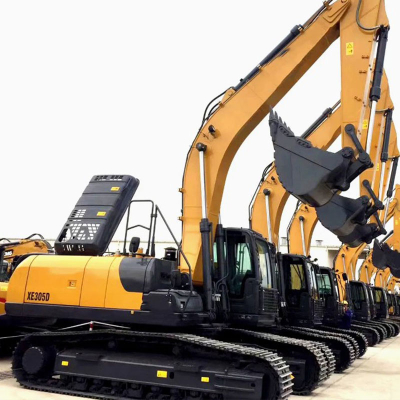Shantui 175-13-00300 Gidrotransformer assembly original
1 、 exact compatibility : is designed specifically for the models SD13/SD16/SD22/SD23/SD32/SL50/LW300/LW500, fits perfectly into their transmission systems. This guarantees simplicity of installation and reliable operation as part of a whole machine.
2 、 High reliability and durability : is made of durable materials that withstand strong mechanical loads and vibrations. Durable components and accurate production provide a long service life, rarely require repair or replacement.
3 、 Effective power transmission : effectively converts and transfers power from the engine to the transmission, providing smooth start and stable operation of the machine in different people. This increases productivity and efficiency in work.
Product representation
Detailed product information
Structural composition
Working wheel: connected to the engine and is the input component of the hydrotransformer that converts the mechanical energy of the engine into the kinetic energy of the liquid.
Turbine: connected to the output shaft, it is the output component of the hydrotransformer that converts the kinetic energy of the liquid into the output mechanical energy.
Stator: located between the pump and the turbine, increases the torque due to the change in the direction of fluid flow.
The locking coupling unit: under certain working conditions, the working wheel of the pump and the turbine can be connected directly to achieve the transmission of 1: 1 and increase the efficiency of the transmission.
The back cover: basically performs the function of sealing and protection, and also provides support for installation of other components.
How does this work
The stage of increasing torque: when the bulldozer starts or works at low speed and high load, the pump wheel rotates at high speed, and the turbine rotates at low speed. The liquid forms a certain state of the flow between the pump wheel and the turbine. The guide wheel changes the direction of the fluid flow, making the torque at the output of the turbine there is more torque at the entrance of the pump’s working wheel, thereby reaching an increase in the torque.
Stage of clutch: when the turbine speed reaches a certain level and approaches the speed of the pump wheel, the hydrotransformer goes into a hydraulic clutch state. At this time, the fluid flow between the pump wheel and the turbine is mainly a circulation flow, the guide wheel does not have the effect of increasing the torque, and the hydrotransformer mainly plays the role of transmitting torque with high transmission efficiency.
Stage of locking: when the turbine speed approaches the speed of the pump and reaches certain conditions, the locking coupling is turned on to directly connect the pump and turbine to achieve a transmission of 1: 1. At this time, the hydrotransformer has the highest transmission efficiency, which can effectively reduce fuel consumption and increase the efficiency of the bulldozer.
Product model and parameters: we take the SHANTUI YJ280 hydrotransformer as an example, the nominal input speed is 2400 rpm, the nominal input capacity is 55 kW, the ratio of the torque K0 = 3.32 and the maximum efficiency of the ηMAX≥0.82.
Installation
Preparation: Clean the hydrotransformer and related installation details, prepare the necessary tools, such as wrenches, heads, calipers, probes, etc., and also make sure that the workplace is clean and tidy.
Checking before installation: check if all the details of the hydrotransformer are intact and there are no defects, such as damage, deformation, cracks, etc.; Check if the seals are not worn out or damaged, and replace them in a timely manner if there are any problems; Check if the connecting bolts, nuts, etc. are intact and there are no damage.
Stages of installation
Set the guide wheel saddle: clean the hydrotransformer body and put it on an even surface, check the rotating oil seal and the O-type oil seal, carefully insert the shipping wheel to the housing, pay attention to the correspondence of the intake and exhaust oil openings, block the intake and exhaust oil valves And check The elasticity of the spring.
Install the handout: turn the body 180 degrees and put it horizontally, install the distribution gear and insert it into the guide wheel nest, then carefully insert two bearings 117 into the inner opening of the distribution gear and the pump impeller.
Set the pump wheel and bearings: before installing the pump wheel and other bearing 117, add the engine oil, lightly tap the bearing, and then move the gear gear to check the flexibility of rotation, use the tools to raise the gearing gear up so that it is tightly contacted from the lower surface pump wheels and two end surfaces bearing, then tighten the bolts 14-M8x30.
Install the guide wheel: before installing the guide wheel, cut the burrs on the slots, and after the installation, install the lock ring in the guide wheel nest to limit its axial displacement.
Install the turbine node: insert the 113 bearing into the rear hole of the second stage and use the locking ring to prevent the axial movement of the turbine of the second stage. Then carefully insert it into the casing of the turbine of the first stage and rotate the turbine of the second stage to check its flexibility. Finally, install the turbine of the first stage in the hill of the turbine of the first stage and carefully insert each spring pin. Install the nodes of the turbine of the first and second steps in the wheel of the lid, install the O-type oil seal per end of the cover of the cover and use the tools to raise it into the hydrotransformer node.
Check after installation: check if the hydrotransformer is reliably installed, whether the connecting bolts are tightened and whether there are no interference between the components; Check if the seals are correctly established and there is no risk of leakage; Manually turn the hydrotransformer to check whether it rotates easily.
Common errors
The oil temperature is too high
Reasons: too low the level of transmission oil; too low water level in the cooling system; The oil tube and cooler are clogged or too contaminated; The hydrotransformer has been working for too long in the low efficiency range; The fasteners of the working wheel are weakened; The bearing is weakened or damaged; The built-in hydrotransformer is blocked due to the jamming of the overall coupling; When assembling the guide wheel, there are no parts of the overall coupling mechanism.
Method for eliminating malfunctions: immediately stop the car and let the engine idle, check if there are leaks in the cooling system, is filled with water, check the oil level in the transmission, adjust the machine for the hydrotransformer to work in the high efficiency zone, check the oil temperature pipes and cooler and eliminate the blockage, drain a small The amount of oil to check if there is a metal powder in it, and check if the guide wheel works correctly.
The oil supply pressure is too low
Reasons: insufficient oil supply, oil level below the suction plane; The oil pipeline flows or clogged; too much oil enters the transmission; intake oil pipeline or oil filter clogged; The hydraulic pump is strongly worn or damaged; The suction filter is installed incorrectly; oil is foamed; The inlet and exhaust valves cannot be closed or the stiffness of the spring is reduced.
Method for eliminating malfunctions: check the oil level, oil pipe, oil filter, hydraulic pump, oil suction filter, oil quality, as well as inlet and exhaust pressure valves, and perform appropriate repair or replacement.
Oil leak
The reason: the connecting bolts between the back cover of the hydrotransformer and the winged hinge, as well as between the impeller and the wheel hub are weakened or the seals are worn out or damaged.
Method for eliminating malfunctions: Run the engine to check the place of oil leakage, tighten the connecting bolts or replace the sealing ring.
After -sales service
Repair services: Shantui usually has a professional after -sales service team with rich experience and knowledge in the field of repair, which can quickly and accurately diagnose and eliminate the malfunctions of the hydrotransformer. We can provide maintenance services “from the door to the door” to reduce the downtime of the equipment. In the case of some complex malfunctions, the hydrotransformer can also be sent back to a professional repair workshop for repair.
Delivery of details: We have a comprehensive system for delivering parts that allows you to timely supply various original parts for hydrotransformers, guarantee the quality and compatibility of parts, as well as guarantee the reliable operation of the hydrotransformer after the repair.
Quality guarantee: new products of the hydrotransformer, as a rule, are supplied with a certain warranty period. During the warranty period, if the malfunction occurs due to problems with the quality of the product, they can be repaired or replaced for free.
Technical support: providing technical consulting services to customers, answers to their questions on the use and maintenance of hydrotransformers, as well as regular visits to customers for familiarization using equipment and providing the necessary technical recommendations.
Below are detailed stages of installing the SHANTUI hijotransformer. During the installation process, be sure to strictly follow the working procedures to ensure the quality of the installation and equipment safety:
Preparation for installation
Cleaning the installation site: select a clean, spacious, even and well -ventilated workplace, remove garbage, butter and dust from the ground and make sure that nothing interferes with the installation process.
Preparation of tools: Prepare various tools necessary for installations, such as wrenches of different specifications, heads, screwdrivers, jacks, lifting equipment (such as manual tali, taps, etc.), spools, probes, dynamometric keys, etc. At the same time prepare cleaning products, such as clean fabric, cleaning agent, etc. lubricants (for example, consistent lubrication, motor oil) and sealants.
Verification of details: Conduct a comprehensive check of the hydrotransformer and related components to make sure of the integrity of all parts and the absence of defects, such as deformation, cracks, wear, etc. Check if the seals are not worn out or damaged (for example, sealing rings , seals, etc.). If there are any problems, replace them on time. Check the completeness of connecting bolts, nuts and other standard details, as well as the correctness of their specifications.
Equipment cleaning: use a cleaning agent and clean fabric for thoroughly cleaning all the details of the hydraulic converter, including a pumping wheel, a turbine, a guide wheel, a locking coupling, the rear cover, etc., to remove oil, rust and pollution from the surface. At the same time, clean the details of the bulldozer connected to the hydrotransformer, such as the body of the engine flywheel, output shaft, etc., so that the installation surface is clean and even.
Install the hydrotransformer on the body of the engine flywheel.
Raising the hydrotransformer: Use the appropriate lifting equipment to smoothly raise the hydrotransformer and slowly move it to the location zone of the engine of the engine flywheel. During the rise, pay attention to the center of gravity of the hydrotransformer to ensure the safety of lifting and avoid clashes and damage.
Combine the installation pin: Combine the input shaft of the hydrrotransformer with the central hole of the engine flywheel and pay attention to combining the opening of the installation pin on the hydrotransformer with the installation pin on the body of the engine flywheel. Carefully lower the hydrotransformer so that the installation pin enters the hole for the installation pin, which will ensure the exact position of the hydrotransformer.
Install the connecting bolts: use a suitable wrench to install connecting bolts between the hydrotransformer and the engine of the engine flywheel. Tighten the bolts gradually diagonally to guarantee that the moment of tightening the bolts will be uniform and reaches the indicated value of the torque (see the technical maintenance of the Shantui bulldozer). When tightening the bolts, use a dynamometric key to measure and ensure the compliance of the moment of tightening the bolts with the requirements.
Connect the output shaft of the hydrrantransformer with the input shaft of the gearbox.
Install the coupling (if any): if a coupling is used to connect the hydrotransformer and the transmission, first install one end of the coupling on the output shaft of the hydrotransformer, making sure that the wandering groove of the coupling is combined with the venal on the output shaft, and then fix the coupling with bolts or other fasteners.
Combine the input shaft: Combine the input shaft of the transmission with the output shaft of the hydrrotransformer, paying attention to the combination of slots on the entrance shaft with the slots of the slots on the output shaft of the hydrotransformer. In the process of leveling, you can use the corresponding tools (for example, scrap) for accurate adjustment to guarantee the coincidence of the central lines of two shafts.
Install the connecting parts: Connect the input shaft of the transmission and the output shaft of the guidrosformer and install the appropriate connecting parts, such as bolts, nuts, stop rings, etc., in accordance with the specific connection method. Also, gradually tighten the connecting bolts diagonally to ensure a reliable connection and achieve the specified moment of the tightening.
Set the lubrication line of the hydrotransformer.
Clean the pipeline: use the cleaning agent and clean fabric to clean the intake and exhaust pipes of the lubricant of the hydrotransformer to guarantee the cleanliness and lack of pollution inside the pipeline. At the same time, check if you are damaged whether the pipeline is deformed or closed. If there are any problems, repair or replace them on time.
Connecting pipelines: Connect the intake and exhaust pipelines of lubricating oil to the corresponding interfaces of the hydrotransformer, ensuring the tightness of the compounds and the absence of leaks. When connecting pipes, sealants or sealing gaskets can be used to enhance the sealing effect. After the connection is completed, check the correctness of the direction of the pipeline, the absence of bends, twist or interference, as well as in a timely manner, eliminate the problems.
Installation of other accessories for hydrotransformer
Install the radiator (if any): if the hydrotransformer is equipped with a separate radiator, install the radiator in a suitable place and connect the coolant line between the radiator and the hydrotransformer. Make sure that coolant pipelines are sealed, there are no leaks and the coolant flows in the right direction.
Install the sensors and harnesses of the wires: install the appropriate sensors (for example, the oil temperature sensor, oil pressure sensor, etc.) and wire bundles in accordance with the structure and function of the hydrotransformer. Install the sensor in the indicated place and make sure that the connection between the sensor and the hydrotransformer is reliable, the wire harness is neatly laid, and there is also no damage, short circuit or a chain break. Connect the sensor to the electrical system of the bulldozer to ensure its correct operation and the accuracy of the signal transmission.
Checking and debugging after installation
Appearance verification: Conduct a comprehensive verification of the appearance of the installed hydrotransformer to check whether all connecting parts are reliably installed, whether the bolts are tightened, whether the seals are correctly installed, whether the tubes are connected and the wire burning is carefully laid. Check if there are other components or obstacles that interfere with the hydrotransformer. If there are any problems, eliminate them immediately.
Verification of rotation: manually crap the input or output shaft of the guidrosformer to check whether the hydrotransformer rotates flexibly and whether there are any abnormal conditions, such as jamming or abnormal noise. If the rotation is not smooth, this may be associated with improper installation or interference between the components, which requires additional verification and adjustment.
Add lubricating oil: In accordance with the operating instructions of the Shantui bulldozer, add the required amount of lubricant to the hydrotransformer. When adding lubricating oil, pay attention to the model and the characteristics of the lubricating oil to make sure that it meets the requirements. After pouring, check if the lubricant level is located in the specified range.
Debugging and starting: after completing the above checks and preparation, start a bulldozer, let the engine work for some time at idle and observe the working condition of the hydrotransformer. Check whether the pressure and temperature of the lubricating oil correspond to the norm, whether there are leaks and whether there are abnormal noise or vibrations in the hydrotransformer. If any problem is detected, you should immediately stop the car for verification, find the cause and eliminate it. In the process of debugging, you can gradually increase the engine speed and the load for further verification of the performance and stability of the hydrotransformer.
Exhibition cabinets
Acquaintance with the plant
The plant operates a team of highly qualified and experienced engineers who continuously introduce technological innovations and improve products. Currently, the company has a number of independent intellectual property rights and patented technologies. The manufactured construction equipment includes a wide range of equipment such as excavators, loaders, taps, bulldozers and other machines. Products are highly productivity, reliability, energy efficiency and environmental friendliness, as well as the ability to adapt to difficult operating conditions in various climatic and working media around the world.
Awards and fightsFixation
frequently asked questions
1. In which countries are we exporting?
Asia: Vietnam, India, Indonesia, Pakistan, Kazakhstan, Uzbekistan, etc.
Europe: Russia, Belarus, Ukraine, Lithuania, Saudi Arabia, etc.
South America: Brazil, Chile, Paraguay, Argentina, etc.
Africa: South Africa, Ethiopia, Libya, etc.
2. What kind of payment conditions can we accept?
Usually we can work on T/T, 30% TT before production and 70% TT before shipping
3. What ways can we work for delivery?
1) for most countries in Europe, South America and Africa, etc. We can go along the container or Roro through the ocean freight.
2) for neighboring countries of China, such as Russia, Vietnam, Kazakhstan, Uzbekistan, etc. We can deliver by road or railway.
3) for light spare parts in the urgent requirement, we can send it using the international courier service, such as DHL, TNT, EMS or other air transportation.
4. How can you guarantee that you delivered goods to customers?
A: We will provide you with complete information about delivery for you.
5. What are our advantages compared to other manufacturers/factories?
1) Reliable quality: we carefully choose permanent manufacturers to support spare parts, such as engines, bridges, transmission, and many parts developed and produced by us always adapting the best materials.
2) a competitive price: the concentration of mechanized production in large quantities reduces production costs to ensure a competitive price.
3) The service team: firstly, our sales managers work 24 hours a day, are ready to answer your questions at any time. Secondly, a professional training team with senior equipment, ready to provide support services to users and dealers. Most problems can be solved within 24 hours.
4) Fast delivery: As a rule, we can deliver within 10 working days at the plant after receiving prepayment from customers.
6. How can you provide customers after sales service?
A: We will answer you at first and help you solve problems within 24 hours. If we really need your local, we
We will send your professional person to your settlement to help you solve problems without any fluctuations, supply you with comprehensive

